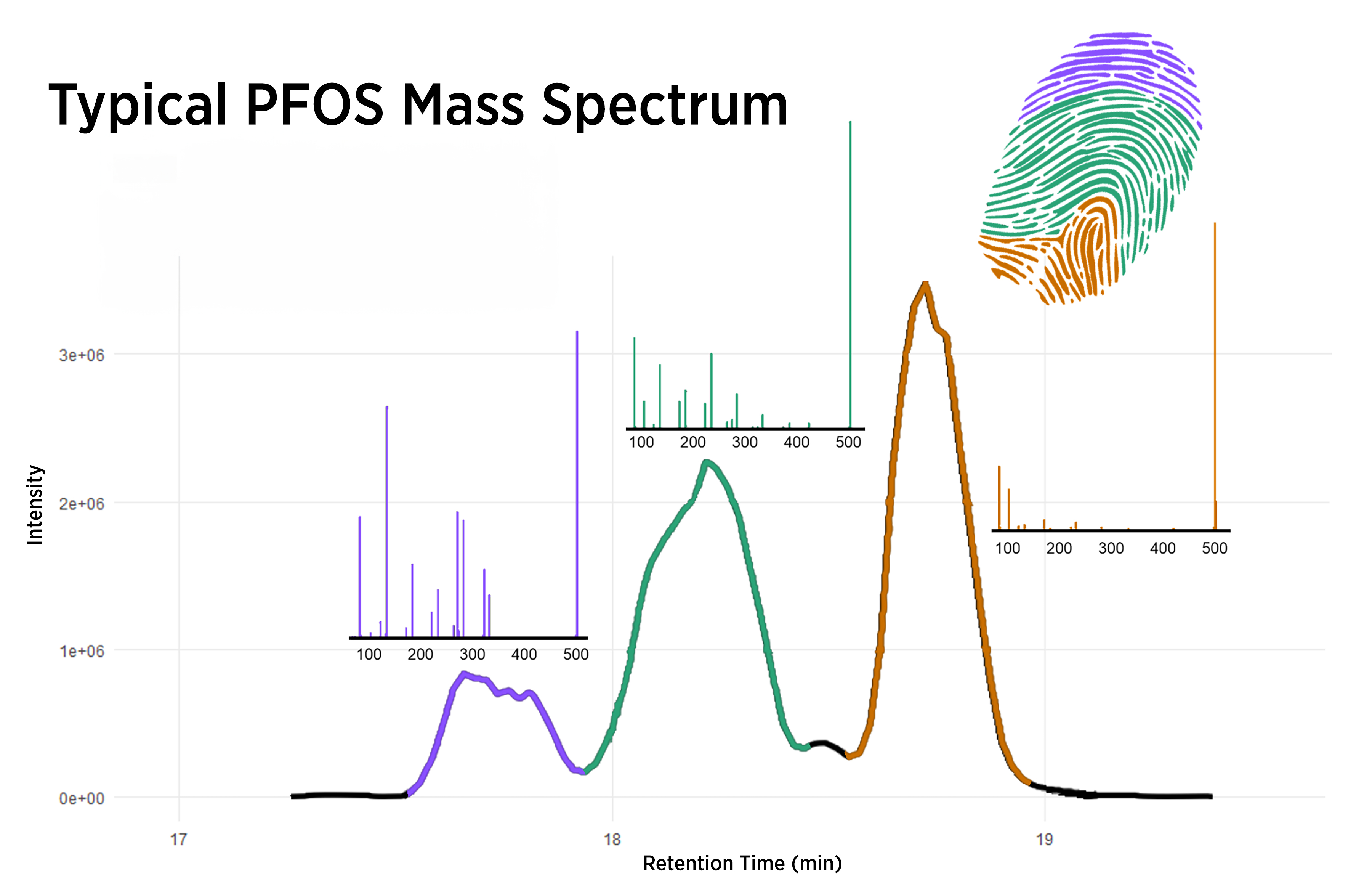- Per-and polyfluoroalkyl substances (PFAS) are a group of long-lasting environmental pollutants, some of which may be linked to serious health effects.
- There are thousands of different PFAS, but scientists can only reliably identify the chemical structures of a few hundred of them.
- NIST has developed a first-of-its-kind database to help researchers identify and categorize unknown PFAS, enabling more comprehensive monitoring of PFAS in the environment.

Scientists widely use the technique of mass spectroscopy to identify unknown molecules, including the forever chemicals known as PFAS.
Stain-resistant clothing, fast-food wrappers, extreme weather gear such as certain jackets and pants — these products get many of their desirable features from a class of manufactured chemicals called per- and polyfluoroalkyl substances (PFAS). But there’s a major downside: Researchers have found evidence that certain PFAS can potentially cause cancer and other serious health effects.
Governmental agencies and environmental organizations are increasingly monitoring PFAS, but there are thousands of different chemical structures of PFAS with only a small fraction that can be measured with high confidence.
“There is no single authority on what is PFAS or what makes up PFAS,” said NIST biologist Jared Ragland. “We know what a few hundred of them look like structurally, but there could be 9,000 or more possible different PFAS structures. It’s not a small problem.”
For example, a community may want to know if significant levels of PFAS are in a local lake used for fishing, so local officials send samples to a lab for testing. However, most PFAS aren’t in the suite of chemicals included for quantitative analysis, so the lab tests will miss them. In addition, the labs may have incomplete or outdated chemical data on PFAS. Due to the continual discovery of additional PFAS, it is difficult to maintain a central database that collects and organizes the scientific community’s knowledge about known and unknown PFAS chemical structures.
To address this issue, researchers at the National Institute of Standards and Technology (NIST) have developed a database that can help others identify and categorize PFAS in chemical analysis data, including “untargeted” chemical analysis data containing information on both known PFAS and unknown PFAS that may be lurking in a sample. The database is the first of its kind and can be useful for environmental pollution monitoring and other applications.
The PFAS database is free and available for download at the NIST Public Data Repository.

PFAS were first used in the 1940s in consumer products and in industry because of their chemical properties, such as the ability to resist heat, oil and water. Some types, such as perfluorooctane sulfonate (PFOS), have been replaced over the years, but in general these chemicals break down slowly and leak into the environment. They have been found in our soil, air, food and water and were used in a wide variety of manufacturing processes, consumer products and fire suppressants.
To monitor where these chemicals are found and to determine where they end up in the environment, scientists need to be able to identify them. An analytical instrument called a mass spectrometer enables scientists to detect known PFAS and understand newly observed PFAS. This device produces a series of lines on a graph that form a unique pattern, which acts like a molecular “fingerprint” of a chemical compound. This new database includes this high-resolution mass spectrometry data and currently contains spectra for 132 PFAS. Contextual information, such as the settings of measurement instrumentation and the types of samples that were used, are attached to each entry. It also includes the NIST “suspect” list of close to 5,000 curated chemical compounds that are highly likely to be PFAS.
The database can be used to identify PFAS in various sources, such as wastewater, tap water, surface water and groundwater, for monitoring environmental pollution. “The goal is that the database will be helpful to identify PFAS across the board and characterize novel ones to answer questions about environmental health, toxicology, exposure risk and remediation efficiency,” said Ragland.
Researchers trained in data analysis will especially find this database useful. However, NIST researchers hope to increase accessibility of the database for all users. They have created a user guide that gives step by step instructions on how to use the database. The database is also portable, meaning it can be used offline, added to and shared between researchers, and comes with a software tool kit found on GitHub. Researchers can reuse elements of the database for organizing and identifying chemicals other than PFAS, such as other emerging contaminants or pesticides in food.
Scientists can easily share the database so they can collaborate, for example, on finding novel patterns in the PFAS data. They can also use the database to build new tools or data processing methods to identify specific types of PFAS that don’t already have high-quality mass spectroscopy data. “Researchers in this area still lack good methods for sharing data directly with others, so it’s a barrier we hope to start to break down,” said Ragland.

